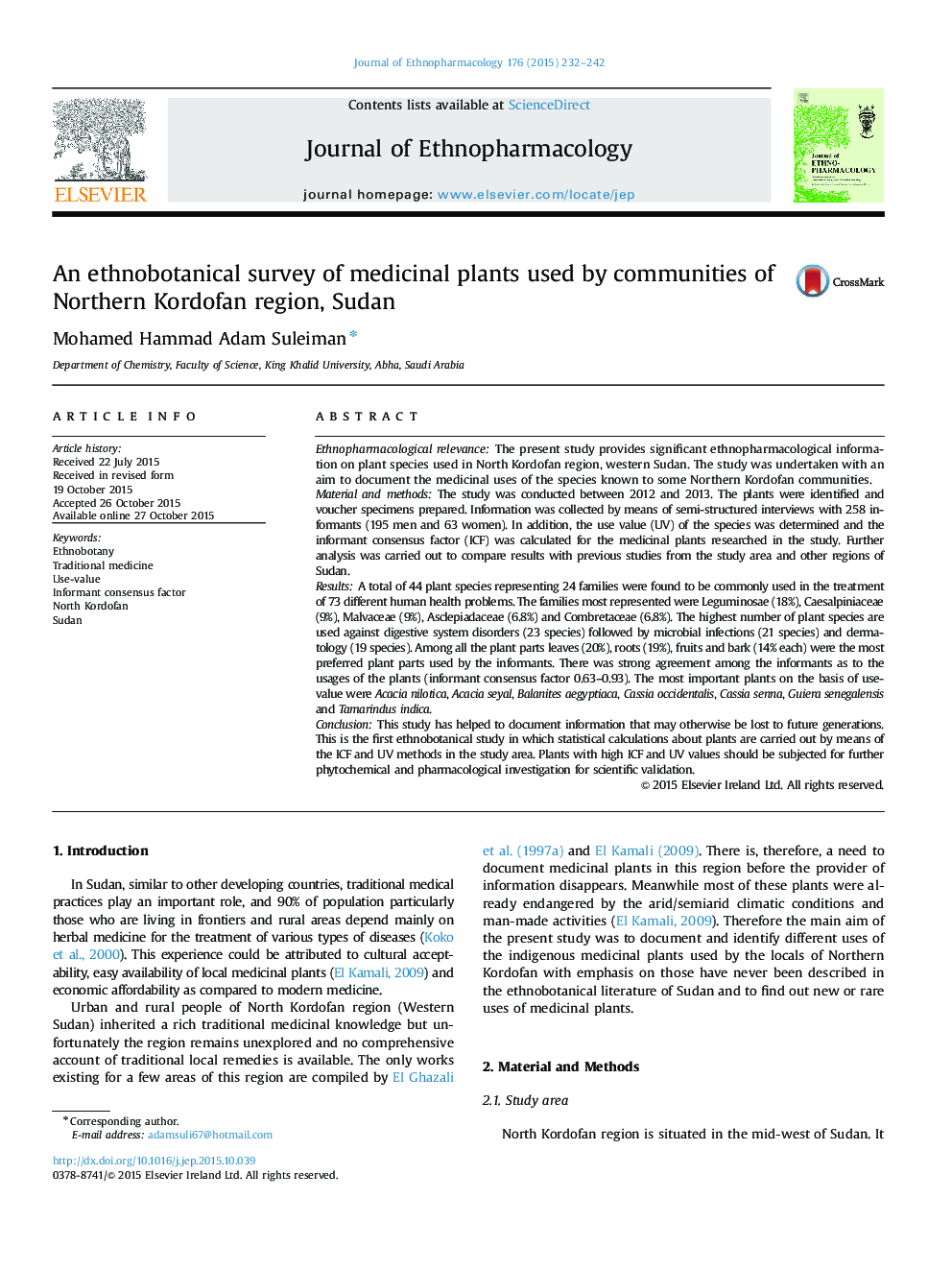| کد مقاله | کد نشریه | سال انتشار | مقاله انگلیسی | نسخه تمام متن |
|---|---|---|---|---|
| 5834942 | 1560386 | 2015 | 11 صفحه PDF | دانلود رایگان |
Ethnopharmacological relevanceThe present study provides significant ethnopharmacological information on plant species used in North Kordofan region, western Sudan. The study was undertaken with an aim to document the medicinal uses of the species known to some Northern Kordofan communities.Material and methodsThe study was conducted between 2012 and 2013. The plants were identified and voucher specimens prepared. Information was collected by means of semi-structured interviews with 258 informants (195 men and 63 women). In addition, the use value (UV) of the species was determined and the informant consensus factor (ICF) was calculated for the medicinal plants researched in the study. Further analysis was carried out to compare results with previous studies from the study area and other regions of Sudan.ResultsA total of 44 plant species representing 24 families were found to be commonly used in the treatment of 73 different human health problems. The families most represented were Leguminosae (18%), Caesalpiniaceae (9%), Malvaceae (9%), Asclepiadaceae (6.8%) and Combretaceae (6.8%). The highest number of plant species are used against digestive system disorders (23 species) followed by microbial infections (21 species) and dermatology (19 species). Among all the plant parts leaves (20%), roots (19%), fruits and bark (14% each) were the most preferred plant parts used by the informants. There was strong agreement among the informants as to the usages of the plants (informant consensus factor 0.63-0.93). The most important plants on the basis of use-value were Acacia nilotica, Acacia seyal, Balanites aegyptiaca, Cassia occidentalis, Cassia senna, Guiera senegalensis and Tamarindus indica.ConclusionThis study has helped to document information that may otherwise be lost to future generations. This is the first ethnobotanical study in which statistical calculations about plants are carried out by means of the ICF and UV methods in the study area. Plants with high ICF and UV values should be subjected for further phytochemical and pharmacological investigation for scientific validation.
337
Journal: Journal of Ethnopharmacology - Volume 176, 24 December 2015, Pages 232-242
